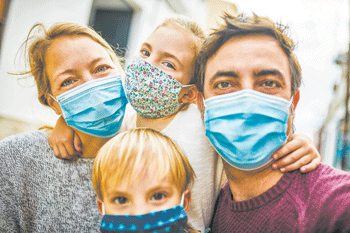 In Other News … millions of Americans, including this one, are breathing sighs of relief and feeling our bodies relax a bit now that hardball and toxic partisan politics are taking a break under a new Administration. Its absence gives all of us a chance to absorb other news perhaps not as intense, but important, nevertheless. Here are several national stories that have caught my attention.
In Other News … millions of Americans, including this one, are breathing sighs of relief and feeling our bodies relax a bit now that hardball and toxic partisan politics are taking a break under a new Administration. Its absence gives all of us a chance to absorb other news perhaps not as intense, but important, nevertheless. Here are several national stories that have caught my attention.
Like many other developed nations, the United States’ birth rate is falling, beginning in 2008 and dipping below the replacement level. Americans are marrying later, if at all, and having fewer children. Demographers say there are multiple reasons for this, including the phenomenal expense of raising and educating children and our nation’s distinctly unfriendly family support policies.
Both Democrats and Republicans, including President Biden and U.S. Senator Mitt Romney, are proposing financial supports for families, albeit of different sorts and for different lengths of time. Other nations, notably Spain, Hungary, France and Japan, have instituted various financial incentives, but none have worked over the long term. A recent story in the The New York Times concludes, “Public child care is the only policy that has been shown to increase fertility in a lasting way … especially if its quality is high, and if it’s available for children of all ages and covers a range of work hours.”
Researchers at the Wittgenstein Centre in Vienna, which studies population, stress this: “Policies should respond to diverse needs of the population, and not to the ideological beliefs of the policy makers.”
And why should we care whether our birth rate declines? We should care because babies grow into the workers of tomorrow who provide society’s financial safety nets and become the movers and shakers for everyone’s futures.
COVID has changed so much about how we live. We must now wear masks, limit our social interactions and the number of people we see, including family and friends, and many of us are suffering mental and emotional distress of all sorts because of COVID’s effects. We now know COVID has also changed how long we live.
More than half a million Americans have died of COVID, more than in any other nation and more than Americans deaths in World War II and the Korean and Vietnam conflicts combined. The massive number of fatalities has literally lowered the life expectancy for all of us by at least one year, and more for racial and ethnic minorities. The gap between the life spans of white and Black Americans is now six years, the widest gap in more than two decades. Such declines in developed nations are unusual, and the United States had begun rebounding from thousands of opioid epidemic deaths between 2014 and 2017. Those gains are now gone. The last major U.S. life span decline was between 1942 and 1943 when our nation entered World War II.
The United States has historically prided itself on being just that— individual states that united. Each state makes its own laws and regulations, which creates a patchwork which has worked for more than 250 years. Occasionally, we find situations where a national strategy would have been more effective than the patchwork. Imagine how much more efficient and almost certainly less lethal a comprehensive national approach fighting COVID and delivering vaccines would have been than our system of each state — and in North Carolina each county — working independently. And, the 29 million people who live in Texas and who suffered through this month’s record cold snap probably wish Texas had become part of the national energy grid so that other states could have sent them some power.
In other words, national responsibility for issues involving public health and safety is not always a bad thing.